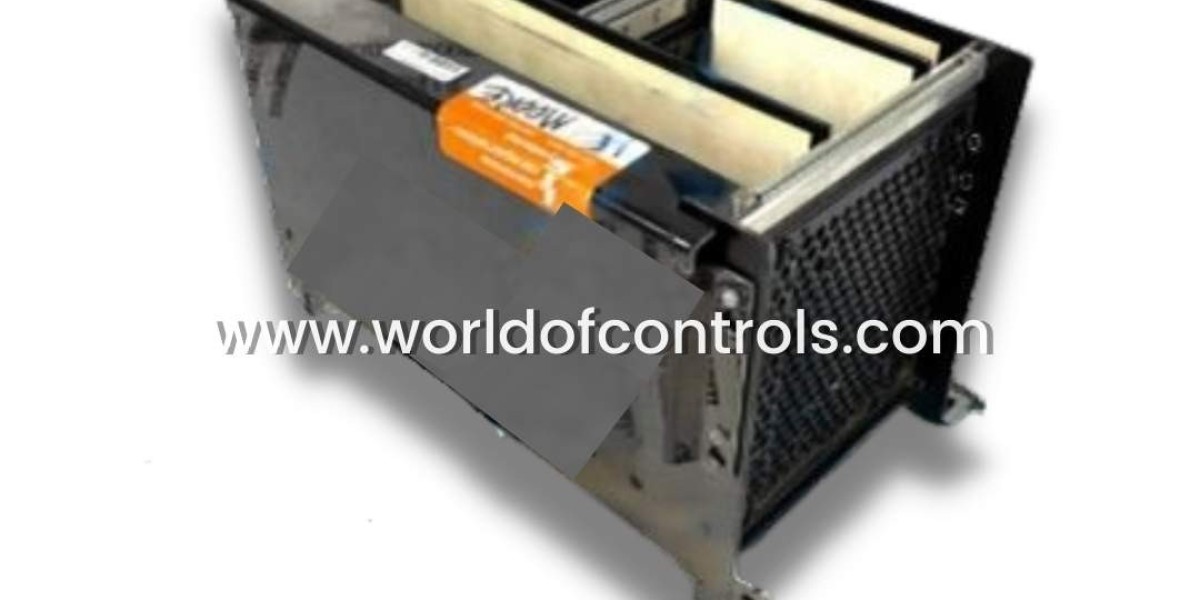Table of Contents:
Introduction:
Understanding Control Assembly Backplanes
What Are Control Assembly Backplanes?
Components of a Control Assembly Backplane
The Role of Control Assembly Backplanes
Streamlining Communication
Enhancing System Modularity
Benefits of Incorporating Control Assembly Backplanes
Improved System Reliability
Simplified Maintenance and Troubleshooting
Types of Control Assembly Backplanes
Parallel Backplanes
Serial Backplanes
Factors to Consider When Choosing a Control Assembly Backplane
Compatibility
Throughput Requirements
Installation and Integration
Step-by-Step Installation Guide
Integration with Control Software
Real-World Applications
Manufacturing Industry
Energy Sector
Challenges and Solutions
Heat Dissipation
Electromagnetic Interference (EMI)
Future Trends in Control Assembly Backplanes
Increased Data Transfer Rates
Enhanced Compactness and Density
Conclusion:
Introduction:
In the world of industrial automation and control systems, efficiency is not a luxury but a necessity. Control assembly backplanes stand as unsung heroes, enabling seamless communication and coordination within complex systems.
Understanding Control Assembly Backplanes
What Are Control Assembly Backplanes?
Control assembly backplanes are interconnected circuit boards that serve as the foundation for integrating various control modules within a system. They provide a centralized platform where electronic components, such as input/output modules, controllers, and communication interfaces, can be easily plugged in and communicate effectively.
Components of a Control Assembly Backplane:
A typical control assembly backplane comprises several key components, including connectors, power distribution channels, communication lines, and cooling mechanisms. These components collectively create an environment where different modules can work in harmony.
The Role of Control Assembly Backplanes
Streamlining Communication:
Control assembly backplanes facilitate efficient communication between different modules. They ensure that data can flow seamlessly, allowing sensors to relay information to controllers and actuators to execute commands promptly.
Enhancing System Modularity:
The modularity offered by control assembly backplanes is invaluable. By allowing modules to be added, removed, or upgraded without overhauling the entire system, they enable quick adaptations to changing requirements.
Benefits of Incorporating Control Assembly Backplanes:
Improved System Reliability:
The structured design of control assembly backplanes reduces the likelihood of loose connections and wiring errors, enhancing the overall reliability of the system. This leads to decreased downtime and increased productivity.
Simplified Maintenance and Troubleshooting:
When a malfunction occurs, the modular design of control assembly backplanes simplifies the troubleshooting process. Identifying and replacing a faulty module becomes straightforward, minimizing the impact on operations.
Types of Control Assembly Backplanes:
Parallel Backplanes:
Parallel backplanes offer multiple data pathways, allowing for high-speed data transfer. They are well-suited for applications that demand rapid communication between modules.
Serial Backplanes:
Serial backplanes use a single data pathway, making them suitable for applications that prioritize reliability and simplicity over speed. They are often used in scenarios where real-time control is critical.
Factors to Consider When Choosing a Control Assembly Backplane:
Compatibility:
Ensuring that the backplane is compatible with the existing modules and equipment is crucial. A mismatch could lead to communication failures and reduced system performance.
Throughput Requirements:
The required data transfer rate varies depending on the application. Choosing a backplane with the appropriate throughput ensures that data can be transmitted without bottlenecks.
Installation and Integration:
Step-by-Step Installation Guide
Installing a control assembly backplane involves careful consideration of module placement, connector alignment, and securing mechanisms. Follow these steps to ensure a successful installation.
Integration with Control Software:
For optimal performance, the control assembly backplane must be integrated with the control software. This involves configuring communication protocols, addressing, and data mapping.
Real-World Applications:
Manufacturing Industry:
In manufacturing, control assembly backplanes orchestrate the coordination of robots, conveyors, and sensors, enabling efficient production lines and quality control.
Energy Sector:
Control assembly backplanes play a pivotal role in energy distribution systems, managing the flow of electricity, monitoring substations, and ensuring grid stability.
Challenges and Solutions:
Heat Dissipation:
The compact nature of control assembly backplanes can lead to heat buildup. Adequate cooling solutions, such as fans and heat sinks, can prevent overheating.
Electromagnetic Interference (EMI):
In environments with high electromagnetic interference, proper shielding and grounding techniques are essential to maintain signal integrity.
Future Trends in Control Assembly Backplanes:
Increased Data Transfer Rates:
As industrial processes become more data-intensive, control assembly backplanes will evolve to support even higher data transfer rates, enabling real-time decision-making.
Enhanced Compactness and Density:
The trend towards miniaturization will lead to backplanes that are more compact while accommodating a higher density of modules, optimizing space utilization.
Conclusion:
Control assembly backplanes form the backbone of modern industrial systems, fostering communication, flexibility, and reliability. By seamlessly integrating modules, these backplanes contribute to smoother operations and better overall performance.
FAQs:
What is the purpose of a control assembly backplane?
A control assembly backplane serves as a platform for integrating control modules within industrial systems, enabling effective communication and modularity.
Can I upgrade modules on a control assembly backplane?
Yes, the modular design of control assembly backplanes allows for easy upgrades or replacements of modules without disrupting the entire system.
What industries benefit from control assembly backplanes?
Industries like manufacturing and energy distribution greatly benefit from control assembly backplanes to enhance their automation and control processes.
How do control assembly backplanes manage heat buildup?
Control assembly backplanes use cooling mechanisms such as fans and heat sinks to dissipate heat and prevent overheating.
What does the future hold for control assembly backplanes?
The future of control assembly backplanes involves higher data transfer rates, increased compactness, and enhanced compatibility with evolving industrial needs.








